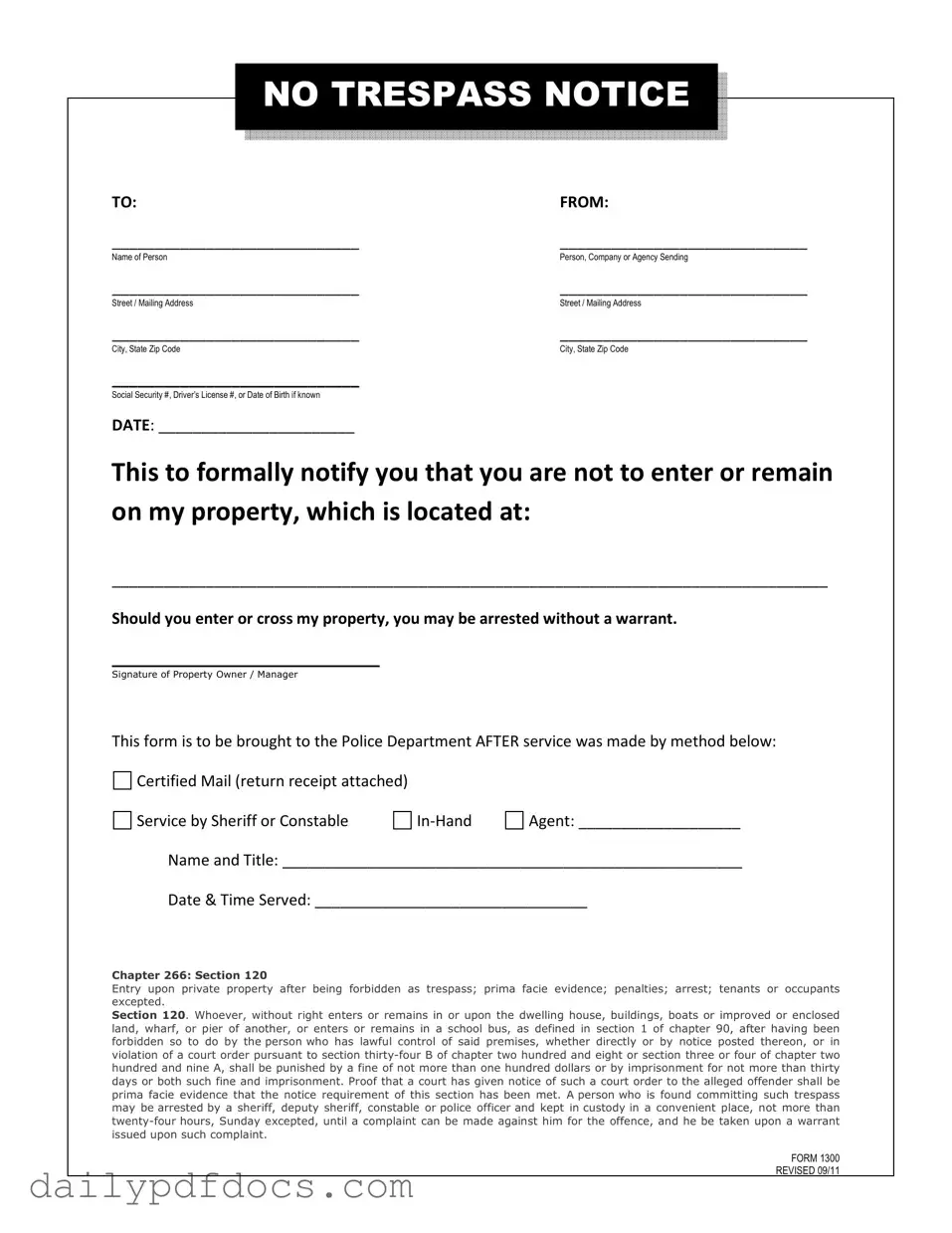What is a No Trespassing Letter?
A No Trespassing Letter is a formal document that informs individuals they are not permitted to enter or remain on a specific property. This letter serves as a clear warning that unauthorized entry could lead to legal consequences, including arrest. It is crucial for property owners who wish to protect their space and establish boundaries.
Why should I use a No Trespassing Letter?
Using a No Trespassing Letter is essential for asserting your rights as a property owner. It provides legal documentation that you have officially communicated your wishes to avoid unwanted visitors. This letter can serve as evidence in court should you need to take further action against trespassers. By using this letter, you establish a clear boundary and protect your property from unauthorized access.
How do I properly serve a No Trespassing Letter?
To ensure the No Trespassing Letter is legally effective, it should be served through one of the following methods: Certified Mail with a return receipt, service by a Sheriff or Constable, or in-hand delivery to the individual. Each method has its benefits, but using Certified Mail provides proof of delivery, while in-hand delivery allows for immediate acknowledgment by the recipient.
What should I include in the No Trespassing Letter?
When drafting a No Trespassing Letter, include your name and address, the recipient's name and address, and a clear statement indicating that they are not allowed to enter your property. Specify the property location and date of the notice. It is also advisable to mention the potential legal consequences of trespassing, such as arrest without a warrant.
What happens if someone ignores the No Trespassing Letter?
If an individual ignores the No Trespassing Letter and enters your property, you have the right to contact law enforcement. The letter serves as a legal basis for your complaint, and police can take action based on the documented notice. It is essential to keep a copy of the letter and any proof of delivery for your records.
Can I revoke a No Trespassing Letter?
Yes, you can revoke a No Trespassing Letter at any time. To do so, you should provide a written notice to the individual stating that the previous letter is no longer in effect. It's advisable to keep a record of this revocation for your own protection. Be clear about the terms and conditions under which the property can now be accessed, if applicable.

